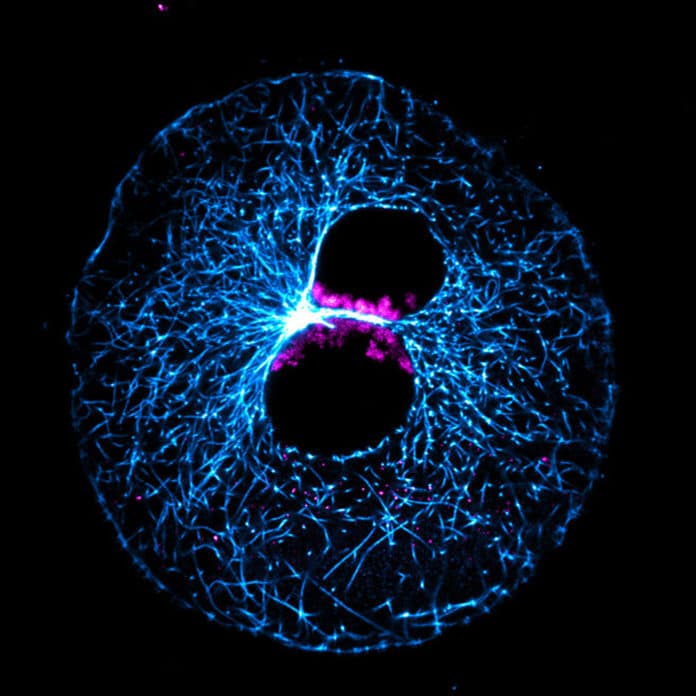Human somatic cells commonly have 46 chromosomes, which together convey the genetic information. These chromosomes are first united at fertilization, 23 from the dad’s sperm and 23 from the mother’s egg.
After fertilization, the parental chromosomes at first exist in two separate compartments, known as pronuclei. These pronuclei gradually move towards one another until they come into contact. The pronuclear envelopes then dissolve, and the parental chromosomes unite.
The majority of human embryos, however, end up with an incorrect number of chromosomes. Only one in three fertilizations leads to a successful pregnancy. Many embryos fail to progress beyond early development.
But how does this problem arise in so many more embryos?
After uniting (sperm and egg), the zygote stage undergoes a highly critical phase for the embryo’s development. To find out why this is the case, Cell biologists at the Max Planck Institute (MPI) for Biophysical Chemistry in Göttingen (Germany), in collaboration with Mariensee and other international colleagues, scientists have developed a new model system for studying early embryonic development.
Using this new system, scientists determined that errors often occur when the genetic material from each parent combines immediately after fertilization. This happens due to a significantly inefficient process.
For the study, microscopy videos of human zygotes were analyzed. These videos were recorded by a laboratory in England. They additionally set out to find a new model organism suitable for studying early embryonic development in detail.
Tommaso Cavazza, a scientist in Schuh’s department, said, “Together with our collaboration partners at the Institute of Farm Animal Genetics, we developed methods for studying live bovine embryos, which closely resemble human embryos. The timing of the first cell divisions is comparable in human and bovine embryos. Furthermore, the frequency of chromosomes distributing incorrectly is about the same in both systems.”
The model also has another benefit: scientists obtained the eggs from which the bovine embryos developed from slaughterhouse waste, so no additional animals had to be sacrificed.
Scientists fertilized bovine eggs in vitro. They then used live-cell microscopy to track how the parental genetic material unites. They found that the parental chromosomes cluster at the interface between the two pronuclei.
In some zygotes, it was observed that individual chromosomes failed to do so, causing chromosomes to be lost during the unification of parental genomes. This left the nuclei with too few chromosomes. These zygotes soon showed developmental defects.
Cavazza said, “The clustering of chromosomes at the pronuclear interface seems to be a significant step. If clustering fails, the zygotes often make errors that are incompatible with healthy embryo development.”
Why do parental chromosomes often fail to cluster correctly?
Scientists uncovered the reason behind this.
Cavazza reports: “Components of the cytoskeleton and the nuclear envelope control chromosome movement within the pronuclei. Intriguingly, these elements also steer the two pronuclei towards each other. So we are dealing with two closely linked processes that are essential but often go wrong. Thus, whether an embryo will develop healthily or not depends on a remarkably inefficient process.”
According to scientists, the findings could have significant implications as an indicator for the chance of successful fertilization.
Journal Reference:
- Tommaso Cavazza et al. Parental genome unification is highly error-prone in mammalian embryos. DOI: 10.1016/j.cell.2021.04.013
